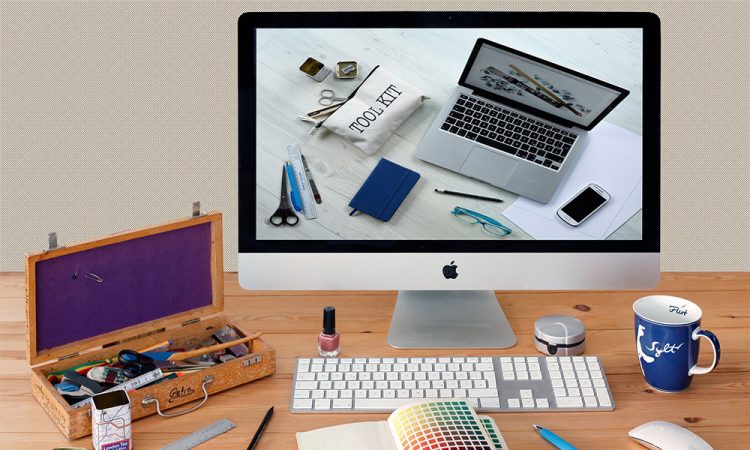
Introduction
Graphic design is an ever-evolving field that constantly pushes the boundaries and breaks norms. With the rapid advancement of technology and the changing needs and expectations of audiences, designers are constantly seeking innovative techniques to create visually stunning and impactful designs. In this article, we will explore some of the most exciting and cutting-edge techniques in graphic design that are revolutionizing the industry.
Embracing Minimalism: Less is More
One of the most notable trends in graphic design today is the embrace of minimalism. Designers are discovering that by stripping away unnecessary elements and focusing on simplicity, they can create designs that are visually powerful and communicate their message effectively.
Innovative Techniques in Graphic Design: Pushing Boundaries and Breaking Norms
The use of negative space, clean lines, and bold typography are key elements in minimalist design. By eliminating clutter and distractions, designers can guide the viewer’s attention to the core message or focal point of the design. This approach not only creates a visually pleasing aesthetic but also enhances the overall user experience.
Interactive Design: Engaging the Audience
Innovative Techniques in Graphic Design: Pushing Boundaries and Breaking Norms
With the rise of digital media, designers have the opportunity to engage their audience in new and exciting ways through interactive design. Interactive elements such as animations, scroll effects, and clickable elements not only capture the viewer’s attention but also create a memorable and immersive experience.
Designers can leverage technology to create interactive websites, mobile apps, and even augmented reality experiences. These interactive designs not only entertain and engage the audience but also provide valuable information and enhance brand storytelling.
Experimental Typography: Breaking the Mold
Typography has always been a fundamental aspect of graphic design, but in recent years, designers have been pushing the boundaries of traditional typography and experimenting with new forms and styles.
Innovative Techniques in Graphic Design: Pushing Boundaries and Breaking Norms
From custom typefaces to kinetic typography, designers are finding innovative ways to communicate messages through text. By breaking the mold and exploring unconventional typographic arrangements, designers can create designs that are visually striking and memorable.
Mixing Analog and Digital: The Best of Both Worlds
Innovative Techniques in Graphic Design: Pushing Boundaries and Breaking Norms
While digital design has become dominant in recent years, there is a growing trend of designers incorporating analog elements into their digital work. By blending traditional techniques such as hand-drawn illustrations, letterpress, and collage with digital tools, designers can create designs that are unique and visually captivating.
This combination of analog and digital elements adds depth and texture to designs, making them more visually interesting and engaging. It also adds a human touch to the digital realm, creating a sense of authenticity and craftsmanship.
Data Visualization: Making Information Beautiful
Innovative Techniques in Graphic Design: Pushing Boundaries and Breaking Norms
As the world becomes more data-driven, the ability to effectively communicate complex information through visual means has become increasingly important. Data visualization is a technique that allows designers to transform raw data into visually compelling and easy-to-understand graphics.
By using charts, graphs, infographics, and other visual elements, designers can present data in a way that is both informative and visually appealing. This not only makes the information more digestible but also enhances the overall design aesthetic.
Motion Graphics: Bringing Designs to Life
Innovative Techniques in Graphic Design: Pushing Boundaries and Breaking Norms
Motion graphics have become a powerful tool in graphic design, allowing designers to bring their designs to life through movement and animation. From animated logos and advertisements to user interface animations and video content, motion graphics add a dynamic and engaging element to designs.
By combining graphic design principles with animation techniques, designers can create designs that capture attention, convey messages effectively, and create memorable experiences for the audience.
Virtual Reality (VR) and Augmented Reality (AR) Design
Innovative Techniques in Graphic Design: Pushing Boundaries and Breaking Norms
Virtual reality (VR) and augmented reality (AR) have opened up new possibilities for graphic designers. With VR, designers can create immersive and interactive virtual environments, allowing users to experience a brand or product in a whole new way. AR, on the other hand, enables designers to overlay digital elements onto the real world, blending the physical and virtual realms.
Innovative Techniques in Graphic Design: Pushing Boundaries and Breaking Norms
Designers are leveraging VR and AR to create captivating experiences, whether it’s through virtual tours, interactive product demonstrations, or gamified marketing campaigns. These technologies allow users to engage with brands and content on a deeper level, making the design more memorable and impactful.
Mixing Different Artistic Styles
Innovative Techniques in Graphic Design: Pushing Boundaries and Breaking Norms
To break norms and push the boundaries of graphic design, some designers are experimenting with the fusion of different artistic styles. By combining elements from various art movements, such as surrealism, pop art, and abstract expressionism, designers can create visually stunning and thought-provoking designs.
This approach allows designers to challenge traditional design conventions and create designs that are truly unique and unexpected. It encourages viewers to question their preconceived notions of what graphic design should be and opens up new avenues for creativity and expression.
Incorporating User-Generated Content
Innovative Techniques in Graphic Design: Pushing Boundaries and Breaking Norms
With the rise of social media and user-generated content, designers are finding innovative ways to incorporate user-created visuals into their designs. By integrating photos, videos, and illustrations shared by users, designers can create designs that feel authentic and relatable.
This approach not only fosters a sense of community and engagement but also adds a personal touch to the design. It allows users to see themselves reflected in the design and creates a deeper connection between the brand and its audience.
Adaptive and Responsive Design
Innovative Techniques in Graphic Design: Pushing Boundaries and Breaking Norms
In the era of multiple devices and screen sizes, adaptive and responsive design has become essential. Designers are employing techniques that allow their designs to adapt and respond to different screen sizes, ensuring optimal user experience across various devices.
By utilizing flexible layouts, fluid grids, and scalable elements, designers can create designs that seamlessly adjust to different screen resolutions and orientations. This ensures that the design remains visually appealing and functional, regardless of the device used to view it.
3D and Immersive Experiences
Innovative Techniques in Graphic Design: Pushing Boundaries and Breaking Norms
Advancements in 3D technology have opened up new avenues for graphic designers to create immersive experiences. Whether it’s through 3D modeling, rendering, or virtual reality, designers can bring their designs to life in three-dimensional space.
By incorporating 3D elements, designers can add depth, realism, and interactivity to their designs. This creates a more engaging and memorable experience for the audience, as they can explore the design from different angles and perspectives.
The Role of Artificial Intelligence
Innovative Techniques in Graphic Design: Pushing Boundaries and Breaking Norms
Artificial intelligence (AI) is revolutionizing various industries, and graphic design is no exception. AI-powered tools and algorithms are being utilized by designers to automate repetitive tasks, generate design variations, and even assist in the creative process.
With AI, designers can streamline their workflow, enhance productivity, and explore new design possibilities. From intelligent color palettes to automated layout suggestions, AI is pushing the boundaries of graphic design and offering exciting opportunities for innovation.
FAQs
Q: What are some examples of minimalist graphic design?
A: Some examples of minimalist graphic design include clean and simple logos, minimalist posters with limited color palettes, and typography-focused designs with ample negative space.
Q: How can interactive design enhance user engagement?
A: Interactive design engages users by allowing them to actively participate and interact with the design. This can include features such as clickable elements, scroll effects, animations, and user-friendly navigation. By providing an interactive experience, users are more likely to stay engaged, explore the content further, and have a memorable interaction with the design.
Q: What are the benefits of data visualization in graphic design?
A: Data visualization in graphic design allows complex information to be presented in a visually appealing and easily understandable way. By using charts, graphs, and infographics, designers can distill data into meaningful insights, making it easier for viewers to comprehend and interpret the information. It enhances clarity, improves decision-making, and makes data more accessible to a wider audience.
Q: How does motion graphics enhance the impact of design?
A: Motion graphics add movement and animation to static designs, bringing them to life and capturing viewers’ attention. By incorporating dynamic elements, designers can create a more engaging and captivating experience. Motion graphics can be used to emphasize key messages, create storytelling narratives, and enhance the overall visual impact of the design.
Q: What is the significance of virtual reality and augmented reality in graphic design?
A: Virtual reality (VR) and augmented reality (AR) offer immersive and interactive experiences for users. In graphic design, VR allows designers to create virtual environments where users can explore and interact with a brand or product. AR, on the other hand, overlays digital elements onto the real world, blending the physical and virtual realms. Both VR and AR expand the possibilities of graphic design by creating new ways for users to engage with content and brands.
Q: How can designers incorporate user-generated content into their designs?
A: Designers can incorporate user-generated content by leveraging social media platforms and encouraging users to share their photos, videos, or illustrations related to a brand or campaign. By curating and integrating user-generated visuals, designers can add authenticity, relatability, and a sense of community to their designs. This approach fosters user engagement, strengthens brand-user relationships, and creates a more inclusive design experience.
Q: How does adaptive and responsive design improve user experience?
A: Adaptive and responsive design ensures that a design adapts and responds effectively to different devices and screen sizes. By employing flexible layouts, scalable elements, and fluid grids, designers can provide a consistent and optimized user experience across various devices, such as desktops, tablets, and mobile phones. This improves usability, accessibility, and overall user satisfaction, as the design adjusts seamlessly to different screen resolutions and orientations.
Conclusion
Innovative Techniques in Graphic Design: Pushing Boundaries and Breaking Norms
Graphic design is a dynamic and ever-evolving field, constantly pushing the boundaries and breaking norms. Through the use of minimalism, interactivity, experimental typography, mixed artistic styles, and the integration of emerging technologies, designers are revolutionizing the industry. These innovative techniques not only enhance the visual impact of designs but also create engaging and memorable experiences for users.
As the design landscape continues to evolve, it is crucial for designers to stay abreast of the latest trends and technologies, continually pushing themselves to explore new possibilities and challenge conventional norms. By embracing innovation, designers have the power to create designs that captivate, inspire, and leave a lasting impression.




